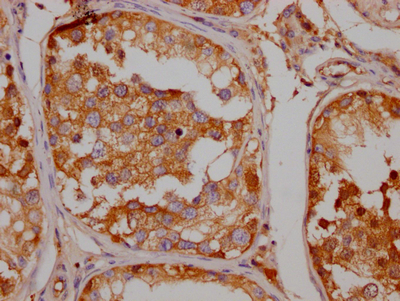The creation of the SLC6A4 recombinant monoclonal antibody involves four main stages: sequencing the SLC6A4 monoclonal antibody gene, cloning the gene into a plasmid vector, introducing the recombinant vector into a host cell line, and purifying the SLC6A4 recombinant monoclonal antibody using affinity chromatography. The SLC6A4 monoclonal antibody is obtained from the SLC6A4 antibody-producing hybridomas, with a synthesized peptide derived from human SLC6A4 used as the immunogen during its production. Once purified, the SLC6A4 recombinant monoclonal antibody is then tested and characterized and can be utilized in ELISA, WB, and IHC applications to detect human SLC6A4 protein.
The SLC6A4 protein, also known as the serotonin transporter (SERT), is a membrane-bound protein that plays a key role in the regulation of serotonin neurotransmission in the brain. SLC6A4 is responsible for the reuptake of serotonin from the synaptic cleft back into the presynaptic neuron, thereby terminating the action of serotonin at the synapse. This process is important in the modulation of mood, behavior, and various physiological processes. Dysfunction of the SLC6A4 gene has been associated with various psychiatric disorders, including depression, anxiety, and autism.





